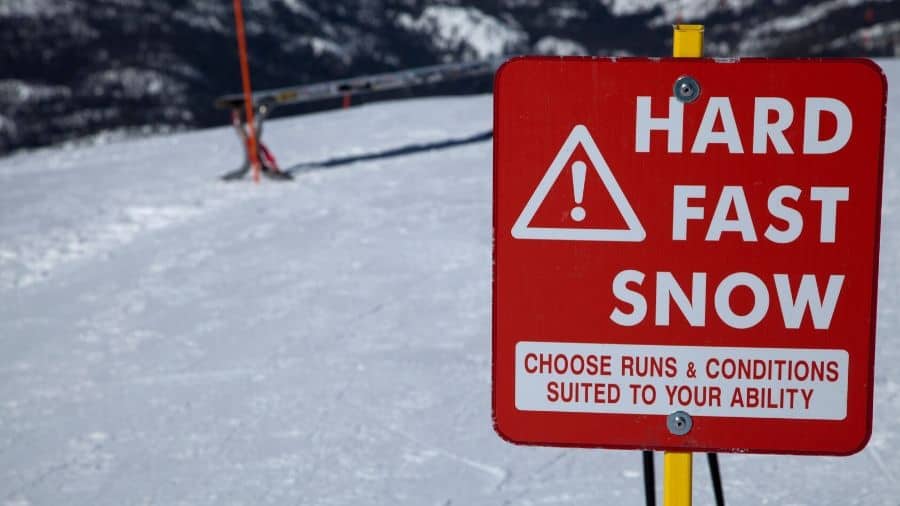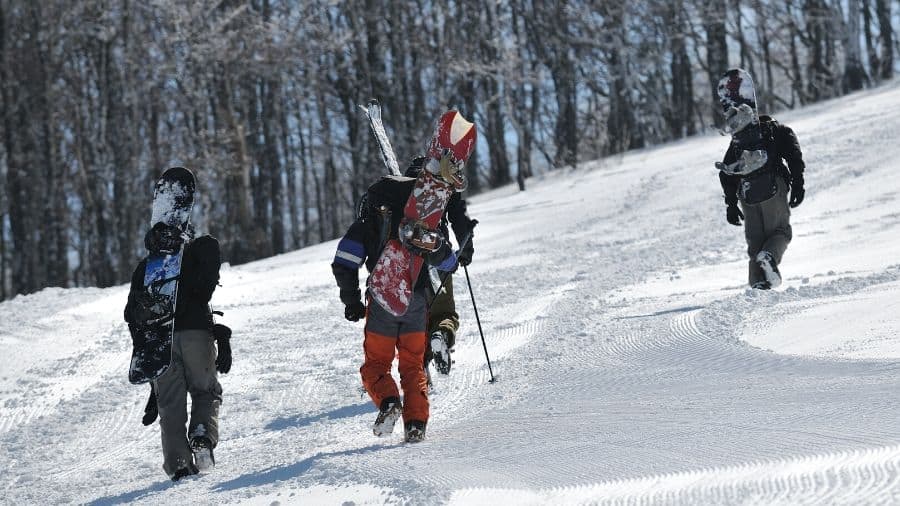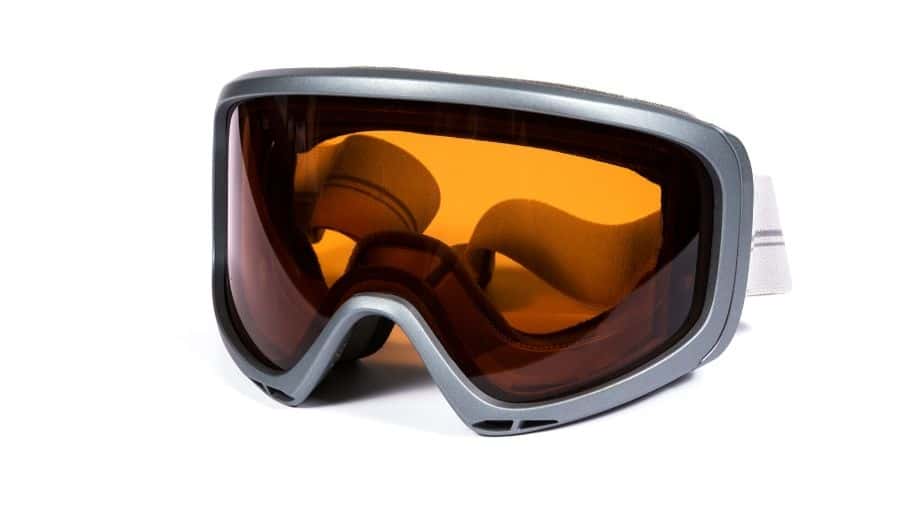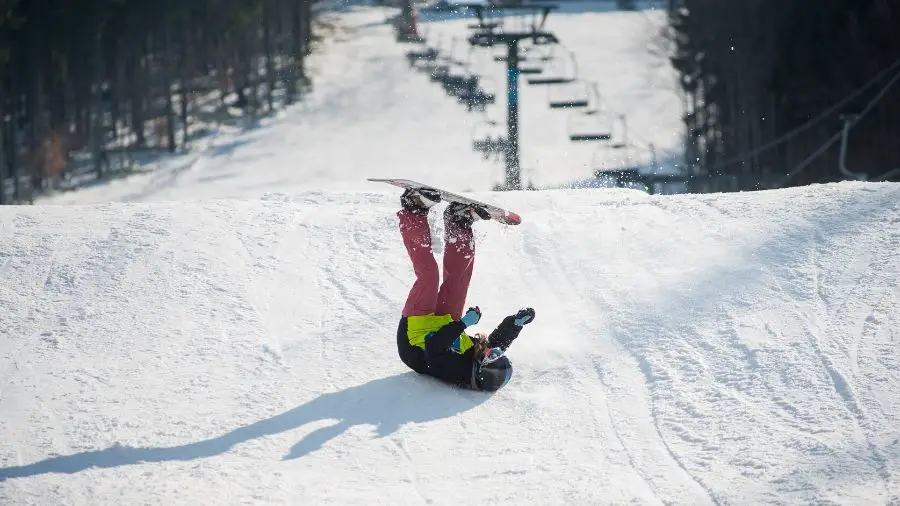
Despite how fun snowboarding is, the fact remains that there is an element of danger associated with the sport. That’s part of the draw as snowboarders look to the slopes for their daily adrenaline rush. Serious injuries are a bummer because they keep you off the slopes for months at a time. Is Snowboarding dangerous?
Yes, Snowboarding can be dangerous. There is a risk of bodily injury as with any sport, however, these risks can be minimized by following some basic safety guidelines. Some associated injuries are ACL tears to the knee, broken arm and wrist bones, spinal injuries, ankle sprains, and concussions. Avalanches, tree wells, tree stumps, and exposed rocks are some common obstacles on the mountain. When snowboarding out of bounds there is an increased risk of avalanches.
Despite these risks, many snowboarders continue to enjoy the slopes season after season. To do so riders should take some precautions to avoid injury, and mitigate risk. Keep reading for a detailed list of measures you should take while snowboarding to prevent injuries and stay safe.
Table of Contents
1. Snowboard Within Your Ability Level
This could be the most important tip to stay safe while snowboarding. It is tempting to go on more advanced runs, or out of bounds before your skill level is appropriate. Friends may try to convince you to go on runs that you are not ready for.
Try to stay true to yourself, and your ability level. Going on steeper, and more challenging runs before your ready will only lead to frustration and exhaustion. In the worst-case scenario you may even injure yourself.
A common cause of injury is snowboarding out of control. Do your best to stay on runs where you will be able to maintain board control to protect yourself and others.
If you end up on a slope that is outside your ability level, unstrap and carefully sidestep down until you are comfortable riding down again. Similarly, you could execute a ‘falling leaf’ pattern, where you maintain a heelside edge going down the steep part of the run.
2. Take Lessons
Don’t be afraid to enlist the help of others. Especially if you are a beginner. Snowboard instructors have a wealth of knowledge. They are an excellent resource for everyone. They will make sure you take the proper steps to protect yourself, and others while on the mountain.
Snowboard instructors will make sure you get on and off the lift safely. They will teach you how to avoid collisions, and best navigate the dangers associated with snowboarding.
3. Build Up Your Strength and Fitness
Before you go snowboarding do some strength training to be in the best shape beforehand. Having strong muscles helps to protect tendons and ligaments from injury. Squats are an excellent exercise to strengthen the quads, glutes, hamstrings, and hips
Walking lunges with torso rotation help to strengthen the legs, and hips while targeting the abdominal muscles. Plank holds with leg abduction are great for core muscle strength and balance. Squats with heel-toe raises strengthen calf muscles used for heelside and toeside edges.
Make sure you perform some type of cardio or aerobic exercise that raises your heart rate to be in the best shape possible for long runs. If you do any other boardsports like surfing, skateboarding, or wakeboarding they’re the best way to prepare for snowboarding.
4. Stretch

Perform some gentle stretching to work up important muscle groups. There are four stretches you should perform before heading out to the mountain in order to prevent muscle, and ligament tears.
While standing grab hold of your foot. Keeping your knee bent, raise your foot up towards your but to activate a quadriceps stretch. In a seated position, reach forward towards your toes to stretch your hamstrings. Remain seated, and cross one leg over the other with the knee bent upright. Twist in the opposite direction with your torso to stretch the but muscles, and low back.
To warm up the shoulder joints grab your wrist, and bring that arm across your body until you feel a gentle stretch along the back of your shoulder. Repeat all stretches on both sides.
5. Drink Plenty of Water
Before you head out on the slopes make sure you drink a lot of water. Dehydration leads to confusion and a lack of cognitive function. You need to have concentration while on the slopes to avoid collisions with other people and objects.
Dehydration will negatively affect your performance and could lead to a headache. You will be sweating a lot during the day, therefore, its important to hydrate properly.
6. Eat Well
You’ll want to have good amounts of energy throughout the day to stay alert, and safe. When blood sugar drops mental function drops along with it. Eating a protein-rich breakfast will help you start your day right.
Being out in the cold snow burns a lot of calories. If something were to happen, such as getting stranded, make sure you have a snack in your pocket in case of an emergency.
7. Wear Warm Clothing
The mountains are cold, and it’s important to wear warm clothing to protect you from hypothermia. Wearing layers is a good idea. You will be able to take a layer off if you get too hot during the day. Thermals are helpful because they are lightweight and warm.
Make sure your jacket and pants are waterproof. Cinch your sleeves, and zip up your jacket to keep cold air, and snow away from your body. Wear gloves to keep the hands dry, and warm. Wear a warm hat, or beanie to stay warm since 60% of heat is lost through your head.
Being warm, and comfortable will help you continue to think clearly and avoid accidents.
8. Snowboard With a Buddy

The buddy system is particularly important while snowboarding. During the unlikely event of an injury, you may not be able to snowboard to get help. You would have to wait until ski patrol, or another person comes by and hears you asking for help. With a friend, they will be able to help you stay calm, and get help quickly.
It’s especially important to snowboard with a buddy when you are out of bounds. Ski patrol will not come by, and if you’re injured, you could be stranded for a long time. A friend will be able to find ski patrol for you and bring them back to help.
9. Wear a Helmet
You should wear a helmet to protect your head from injury. Digging a heelside edge will result in a blow to the back of your head. A helmet will prevent a concussion that could leave you on the sidelines for weeks.
If you’re riding through trees or hitting jumps, and rails make sure to wear a helmet. An injury could occur if you run into a tree. Grinding rails could lead to lacerations, and abrasions if you fall hitting your head on the metal feature. Jumps are dangerous, and falls from great heights will increase the force felt on your head.
Wearing a helmet protects you in the event that someone runs into you on the run. You’ll feel more confident knowing your brain is protected, and be able to charge harder.
10. Wear Wrist Guards, and Impact Shorts
Snowboarding falls often lead to wrist fractures or tears. Wearing wrist guards is an easy way to protect your wrists from injury. They fit under your gloves and have a rigid piece of material on both sides of your wrist. This will keep your wrists in alignment in case you do fall on outstretched arms. The rigid material will add strength to your arms when bracing for a fall.
Impact shorts are another relatively inexpensive way to protect yourself from injury. Falling on your but could lead to tail bone fractures. To avoid this, padded impact shorts fit on underneath your snowboard pants. You will be more comfortable, and less sore from falls at the end of the day.
11. Wear Goggles

To protect your eyes from injury wear googles. Harmful UV rays could damage your eyes over the course of the day. Sunglasses are not a good idea, because they could break when you fall puncturing your eyes.
If you’re riding through the trees there’s a chance a branch could hit you in the face if you make a miscalculation in one of your turns. Goggles will protect your eyes from foreign objects that could come your way.
12. Wear Sunscreen and Lip Balm
The sun reflects off white snow and is intensified by it. To avoid sunburn, and skin damage wear a sunscreen of 30 SPF or higher. Sunburn is uncomfortable and should be avoided. Lip balm with SPF will protect your lips from chapping, and burning.
13. Get Your Board Tuned Up
Head to your local pro shop, and have them make sure everything is in order before you head out to the slopes. The bindings should be firmly fastened to your board to avoid malfunctions that could lead to injury. If the binding were to come loose you could twist your ankle. Make sure the binding straps are tight and able to cinch around your boot securely.
Have them wax the bottom of your snowboard for optimal board performance. This will ensure that you make it through flat spots quickly. Getting stuck in flat areas could be dangerous because people may run into you if you’re stopped in the middle of the run.
Also, get your edges sharpened. If your edges are not sharpened your heelside, and toeside edges will not hold in well which could result in a fall.
14. Check Your Equipment
Check to make sure everything is in working order before you head up the mountain. Make sure that there are no chips or damage to the snowboard. This could cause you to fall. Make sure your boots are in good condition. Make sure the laces will cinch up tightly to keep your foot secure and protect your ankle during riding.
15. Fall the Right Way

Falls happen quickly but try to keep in mind the proper way to fall. Do your best to avoid falling on outstretched arms, as this leads to broken bones or shoulder injuries. Try to fall with your arms close to your body. Allow the snow, and padding to absorb the impact of your fall whenever possible.
16. Stay Away From Icy Patches
Icy spots on the mountain occur after many people have ridden over the same spot. The added traffic removes the top layer of soft snow. Wind causes the hard pack to ice over, and become dangerous.
Like a slippery spot on a recently mopped floor, it will be difficult for you to get on edge over these areas. This will result in a fall, and falling on hard ice is the best way to break bones, and tear ligaments. Keep an eye out for these areas, and snowboard around them.
17. Take Plenty of Breaks
Take a break when you become fatigued. Most injuries occur when you get too tired to continue to execute proper technique. Breaks are an important time to rehydrate, refuel, and rest before heading back up the mountain.
Sometimes it’s difficult to slow down and take a break, but it’s for the best in the long run.
18. Watch Where You Stop on the Mountain
Never stop in the middle of a trail, because high-speed riders could run into you. Avoid stopping below drop-offs on the mountain, because someone could land on top of you injuring both people. Collisions never end well, so do your best to avoid them at all costs.
19. Look Uphill
When merging back onto a run look uphill for other people coming your way. When getting up from a fall look uphill, and chart a path that puts as much distance between you and others as possible.
After a fall look uphill to see if a skier or snowboarder may be headed into you. If so try to move out of the way. If you cannot get out of their way cover your head with your arms and brace for the impact.
20. Maintain Distance from Others
While going down the run, try to snowboard near the edges of the trail. Going straight down the middle increases your likelihood of being run into. Don’t get too close to the trees if your skill level doesn’t allow for it.
Avoid wide, sweeping carves that span the entire slope as this will increase the likelihood that you are in someones way.
Always remember that you are not the only person on the mountain. Do your best to plan a path down the run that keeps a healthy distance between you and other riders.
21. Read and Obey Signage
Warning signs on the mountain are there to protect you. Make sure to look for signs that will alert you to dangerous conditions ahead. Look for double black diamond, and black diamond signs to indicate the steepest trails. Do not go that way unless you are a very advanced snowboarder.
If you encounter a sign that says slow zone make sure to go slow through this area. Ski area boundary signs will indicate that going in that direction will take you out of bounds. Do not snowboard out of bounds unless you are very skilled, and have a buddy with you.
22. Take Extra Precautions Out of Bounds

If you decide to go out of bounds make sure to have a friend with you. Wear a camelback water pack, and have food in case you get stranded, or lost. Make sure your phone is fully charged, and consider bringing walkie talkies for back up.
Keep a vigilant eye out to avoid tree wells, as falling in could lead suffocation. It’s very difficult to get out of a tree well, and snowboarders die every year in this situation. Oftentimes people fall headfirst in this situation, in which case you should do everything possible to get yourself right side up. Stay extra focused to avoid trees and hidden rocks.
Bring an avalanche pack in the event that snow loosens, and overtakes you. This should include a collapsible shovel to dig yourself, or your buddy out. There should also be a beacon in your clothes so rescuers will be able to find you. Finally, an avalanche airbag system will inflate to help you rise above the snow during an avalanche.
23. Limit Alcohol Consumption
Getting intoxicated is a lot of fun, but it could hinder your snowboarding performance. Alcohol impairs your ability to accurately judge distances. It also impairs your ability to make good judgements. Both of these are important skills to maintain the safety of yourself, and the safety of others while on the slopes. So, save your celebrating for the end of the day, after a safe day on the slopes.
While snowboarding is a dangerous sport following these tips you will keep you safe, and having fun for years to come.
